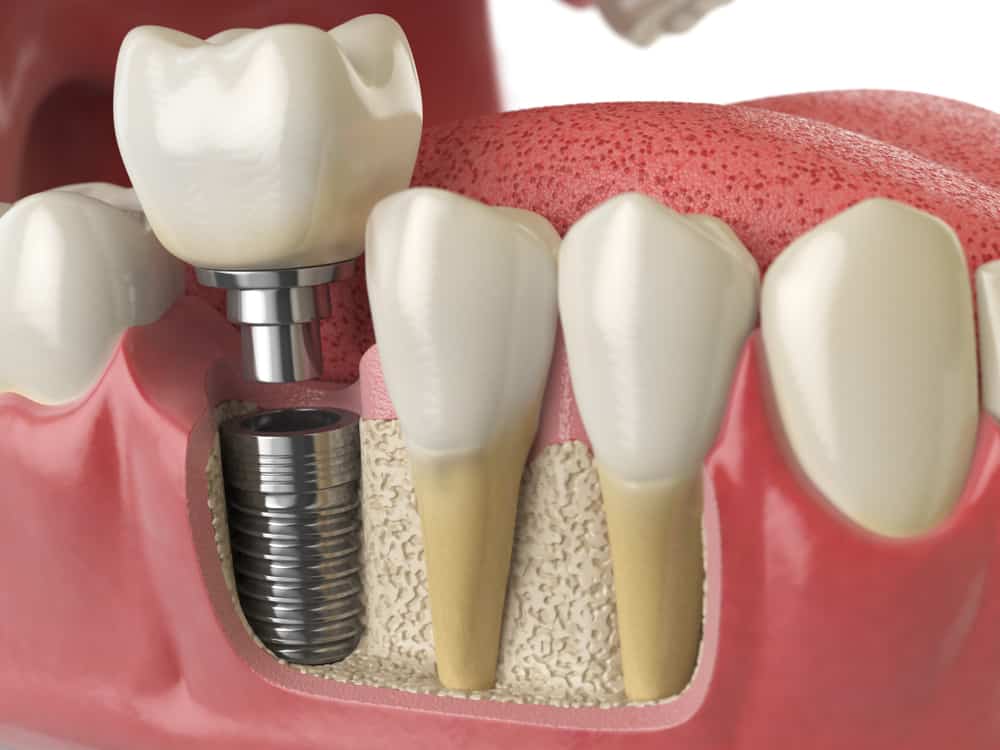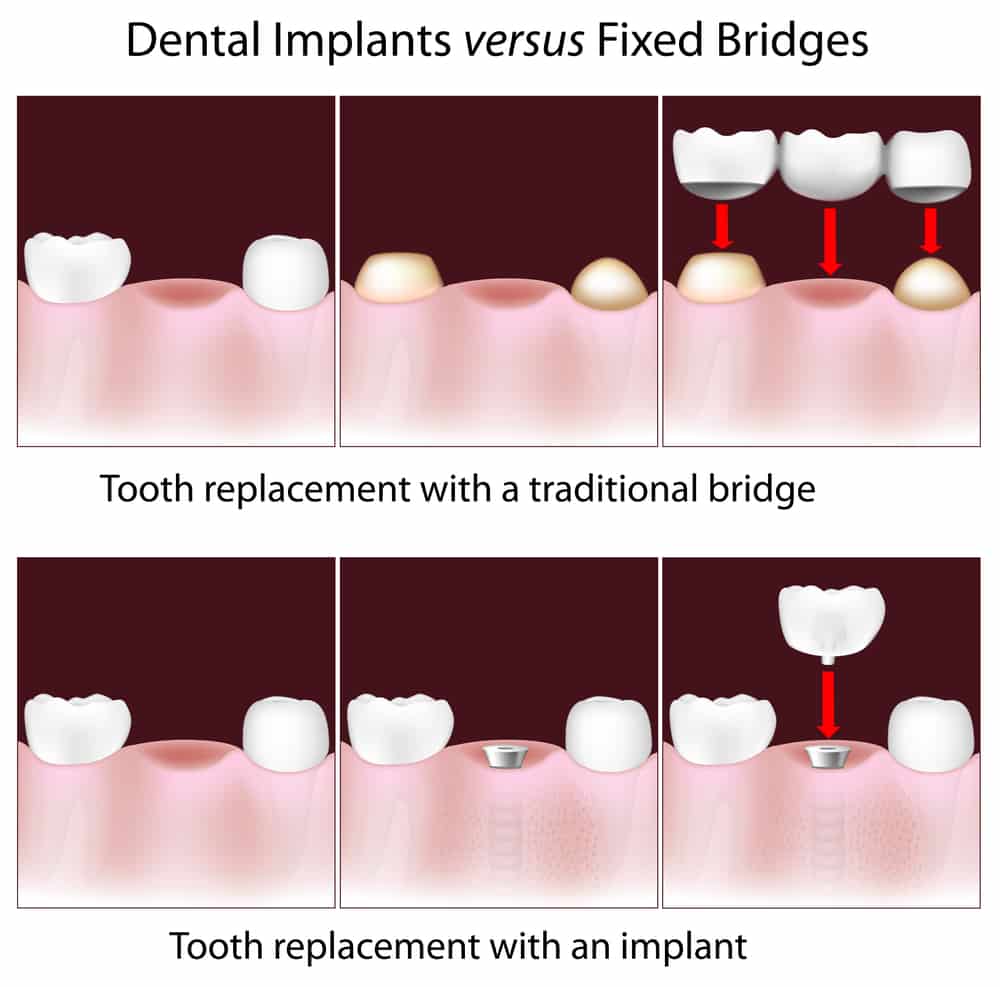When it comes to replacing missing teeth, you have several treatment options. The various tooth replacement options differ in the foundation that your dentist uses to support the missing tooth, which has a great impact on many aspects of the restoration. When the support for a replacement tooth is the neighboring teeth, the result is impaired esthetics, shorter lifespan, and inferior chewing function. When your dentist builds a tooth replacement on the support of the underlying jawbone, the result is as close to a natural tooth as possible.
How a Dental Implant is the Perfect Support for Replacement Teeth
Dental implants are small, threaded titanium root forms that replace the root of a missing tooth. This is the most important difference between dental implants and all other tooth replacement options. Only implants replace the missing tooth’s root.
The reason this is so important is that it allows your dentist to build the new tooth on the new root that anchors into the jawbone, just as a natural tooth does. This means that the bone receives and supports all of the chewing force, allowing dental implants to function as closely to a natural tooth as possible.
In addition to natural function, a dental implant-supported tooth replacement creates the most natural appearance because the new crown emerges out of the gums rather than resting atop them.
The bottom line is that replacing a missing tooth with a dental implant is as close as you can get to a “real” tooth in function and appearance.
How Your Dentist Builds a Replacement Tooth on a Dental Implant
The process of creating a new tooth using a dental implant is relatively simple and painless. After your surgeon places the implant in the site of the missing tooth, and the healing phase is complete, you return to your dentist for the fabrication of the dental crown that will connect the implant (under the gums within the jawbone) to your smile. The process to make an implant-supported crown involves taking molds and measurements of your teeth, choosing the color to best blend into your smile, and placing a temporary covering over the implant abutment (the portion that projects out of the gums onto which we build the crown).
Because the entire process occurs outside of the gums on an implant (as opposed to a natural tooth with nerves), no local anesthetic is necessary. The visit to gather the necessary information and materials to make a perfect implant crown is typically a short one.
You will return after a few weeks to receive the porcelain crown, which we will permanently cement in place atop the dental implant and abutment. This visit is also a short, simple one. We include some instructions about caring for your new implant crown. (The good news is that you care for it much the same as you would a natural tooth. Another advantage!)
The Advantages of Replacing a Missing Tooth with a Dental Implant
 Most dentists consider a dental implant to be the best tooth replacement option. Because a dental implant crown rests solely on the implant within the bone, there is no damage to any other teeth. This independence from adjacent teeth not only makes an implant crown very easy to care for; it also leads to a higher long-term success rate. The implant will remain functional even if the adjacent teeth develop problems.
Most dentists consider a dental implant to be the best tooth replacement option. Because a dental implant crown rests solely on the implant within the bone, there is no damage to any other teeth. This independence from adjacent teeth not only makes an implant crown very easy to care for; it also leads to a higher long-term success rate. The implant will remain functional even if the adjacent teeth develop problems.
The support from the underlying jawbone provides dental implant crowns with a superior chewing force over all other tooth replacement options. The purpose of the upper and lower jaws is to support the teeth and the chewing forces they withstand. Placing natural chewing forces on a dental implant actually promotes the health of the surrounding jawbone.
Again, the emergence of the new crown from the gums, as opposed to a connection to adjacent teeth, creates the most natural cosmetic appearance of all the tooth replacement options. Many other treatment options result in a fake tooth that simply rests on top of the gums, which does not look natural.
Your dentist places the new crown on the dental implant with permanent cement, so these replacement teeth are not removable.
More Questions about Replacing a Missing Tooth with a Dental Implant?
Call today to schedule a consultation with one of our dentists. We can answer any question you have about dental implants and get you started in the process to replace a missing tooth with the most natural-looking, longest-lasting treatment option available today!


Comments are closed.